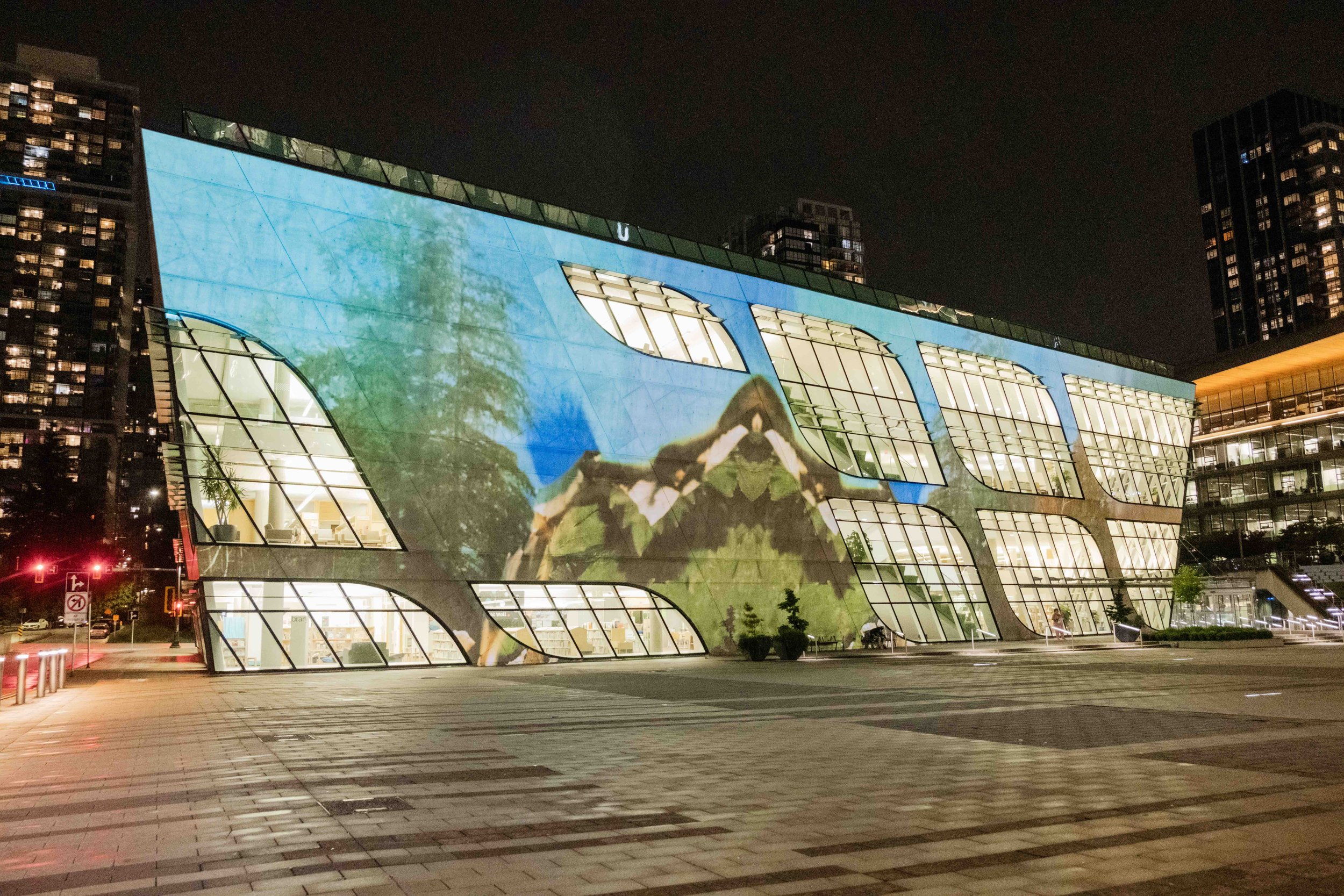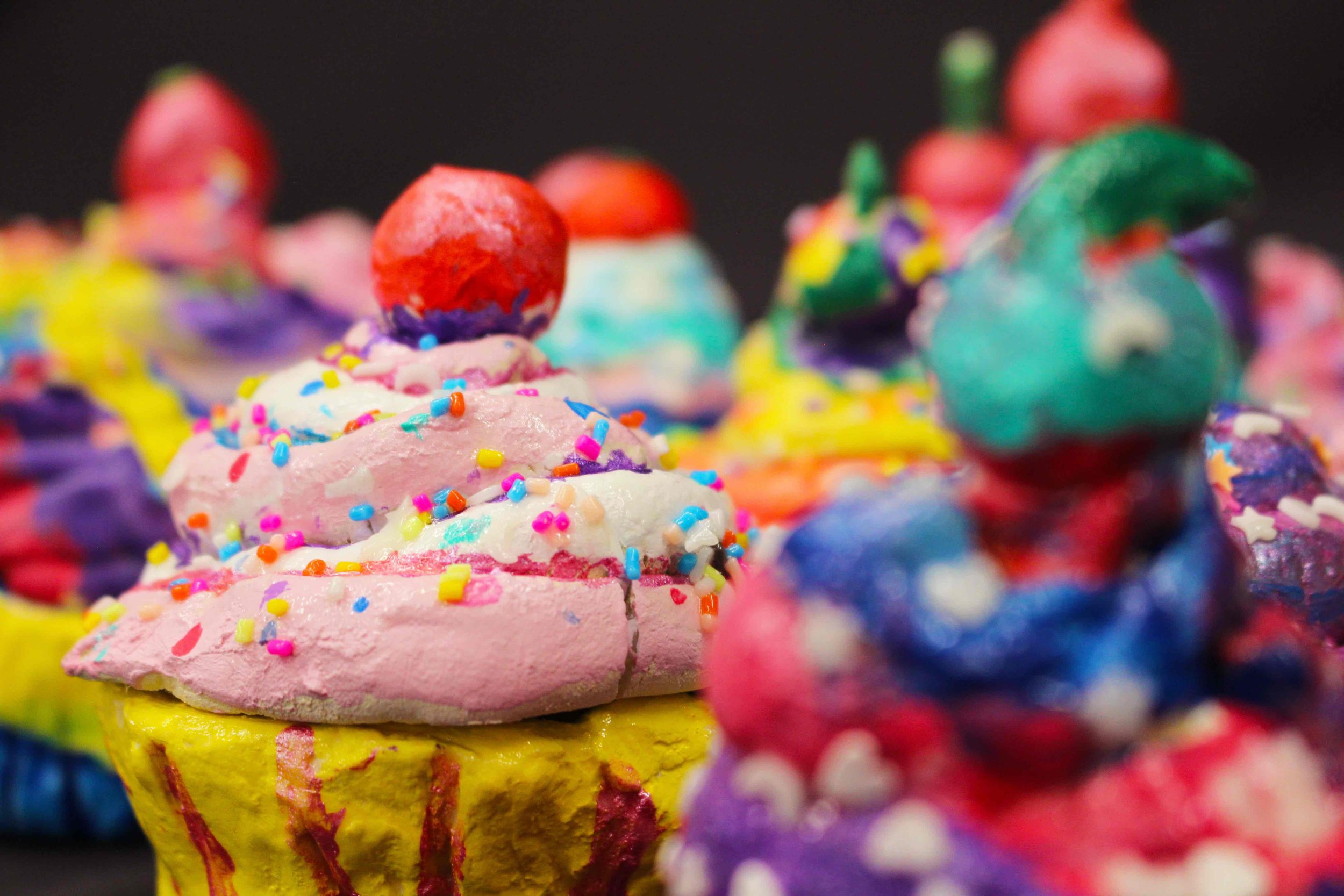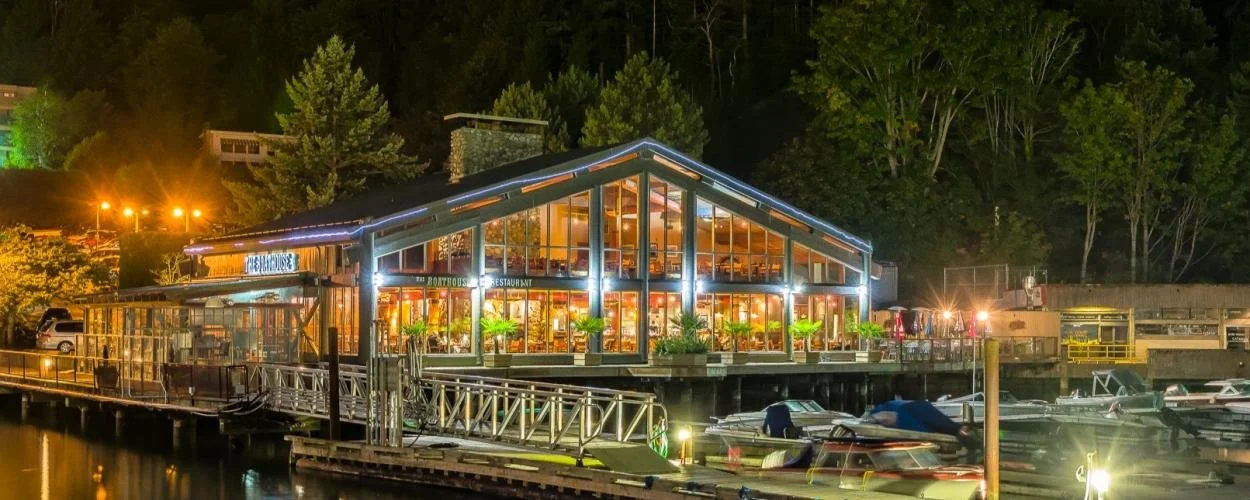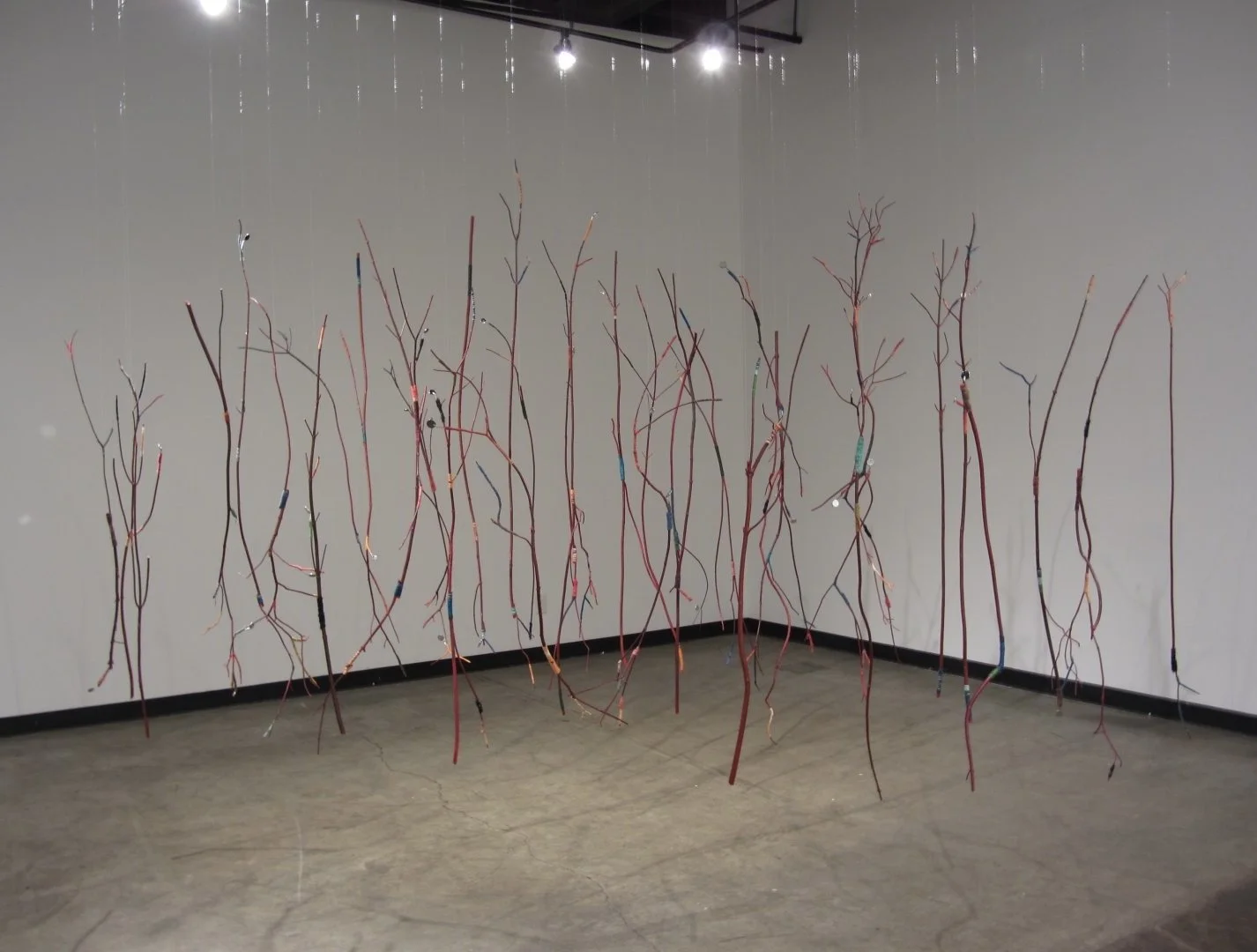Rooted Here: Woven from the Land offers first look at new Vancouver Art Gallery building's copper cladding, to May 12
Show celebrates work of Coast Salish weavers qʷənat, Angela George, Chepximiya Siyam’ Chief Janice George, Skwetsimeltxw Willard “Buddy” Joseph, and Qwasen, Debra Sparrow
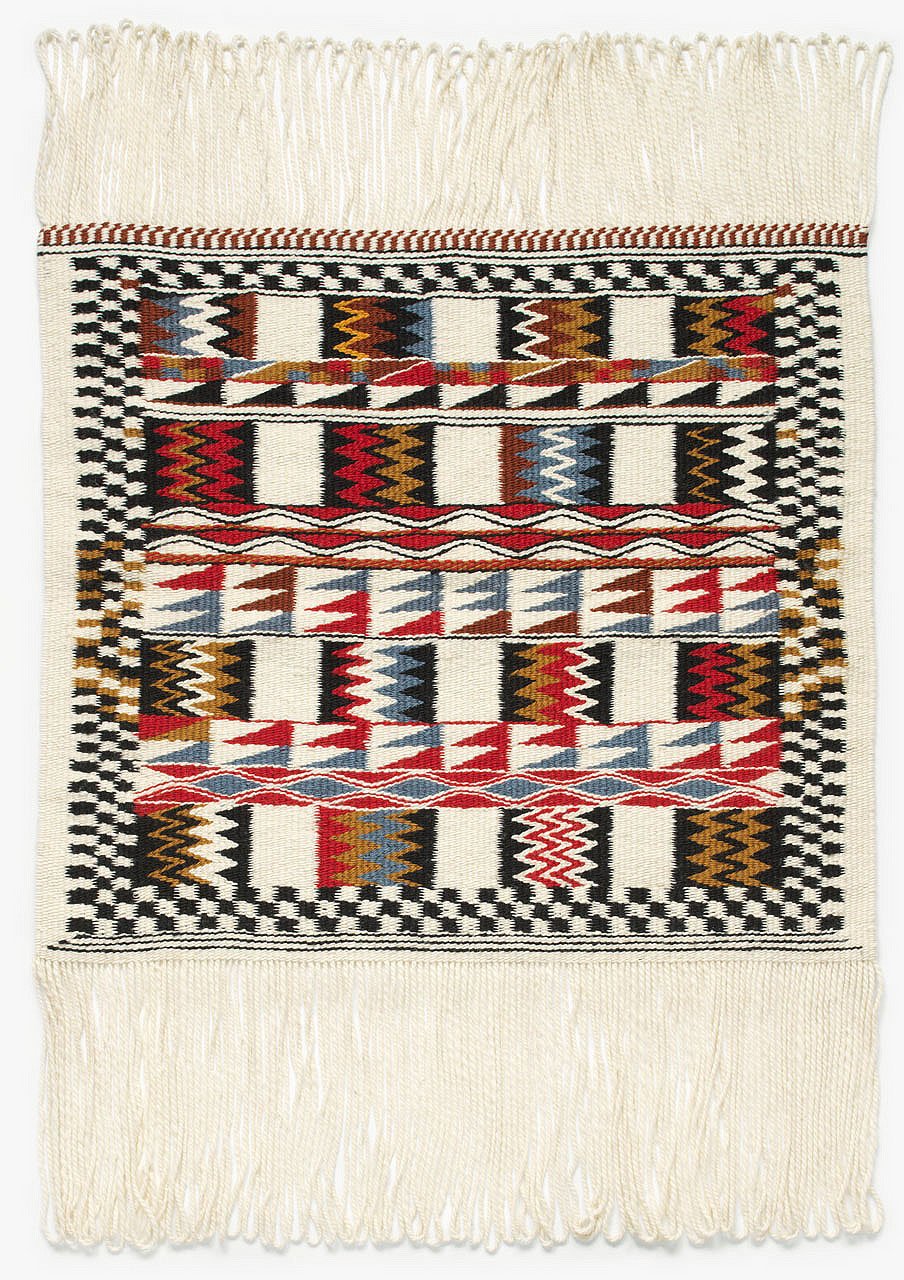
Qwasen, Debra Sparrow’s swəwqʷaʔɬ (Blanket), 2018, wool fibre, dye, Courtesy of the Museum of Anthropology, The University of British Columbia. Purchase funded by the Michael O’Brian Family Foundation, 3356/1
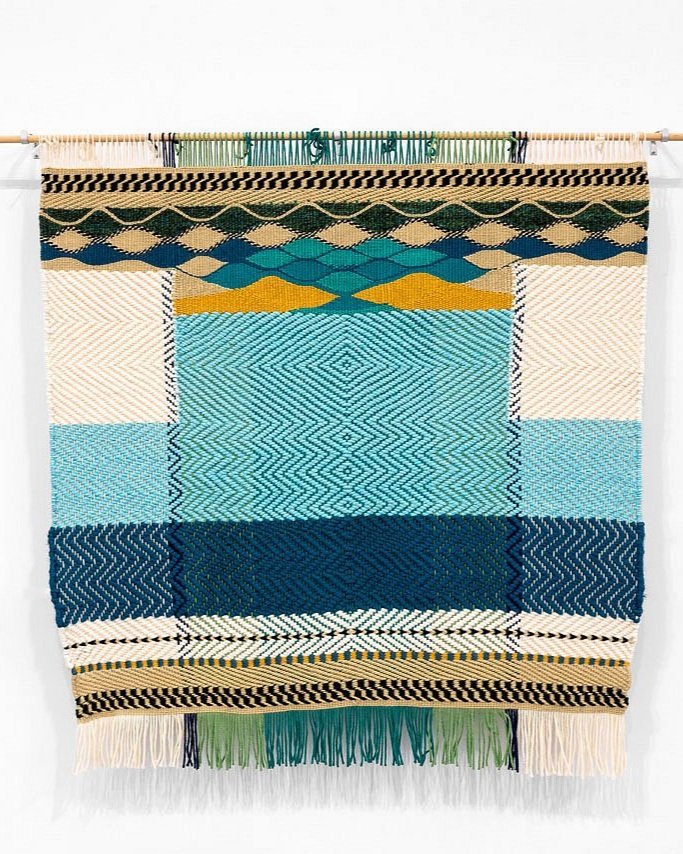
qʷənat, Angela George’s Rivers Have Mouths, 2021, wool blend, Collection of Artists for Kids and Gordon Smith Gallery, Photo: Khim Mata Hipol, Courtesy of Artists for Kids and Gordon Smith Gallery

The mockup of the new copper cladding planned for the Vancouver Art Gallery’s new purpose-built facility.
Rooted Here:Woven From the Land is at the Vancouver Art Gallery to May 12
VANCOUVER ART GALLERY’S recently installed Rooted Here: Woven from the Land doesn’t just celebrate the work of Salish weavers, it gives a glimpse at what the gleaming copper exterior will look like on its purpose-built new building.
That’s because the four artists showcased in the exhibition—qʷənat, Angela George, Chepximiya Siyam’ Chief Janice George, Skwetsimeltxw Willard “Buddy” Joseph, and Qwasen, Debra Sparrow—have all worked closely with its architects (Switzerland’s Herzog & de Meuron, with Vancouver’s Perkins&Will) to bring Coast Salish art to the cladding of the project.
A large-scale copper mockup sits in the rotunda greeting visitors to Rooted Here, representing years of work and research into the woven metal look, and how to connect the architecture to the history of the land it sits on at 181 West Georgia Street. Ground is finally set to break on the $400-million project early this year, after a ground-awakening ceremony in September. There is also a table presentation of models, samples, images, and text tracing the intricate process around developing the new Vancouver Art Gallery’s woven façade.
Visitors can take a closeup look at the perforated strips of copper that mimic the woven look of the works inside the exhibit. The show traces the integration of handspun weaving into the social life of Salish communities, as well as the ongoing work to revive the traditions interrupted by colonialism. The pieces also highlight the innovations of each of the four standout artists, including Musqueam master Sparrow’s strikingly contemporary geometric designs. Each blanket tells a story, many zig-zagging in earthy reds with black, gold, and white. Elsewhere, blue makes an appearance, most symbolically in Angela George’s Rivers Have Mouths.
In wool or in copper, the show weaves a profound spell.
Janet Smith is cofounder and editorial director of Stir. She is an award-winning arts journalist who has spent more than two decades immersed in Vancouver’s dance, screen, design, theatre, music, opera, and gallery scenes. She sits on the Vancouver Film Critics’ Circle.
Related Articles
In Japanese ceramicist and painter Shigeru Otani’s work, adorable bunnies and sea monsters tell deeper truths
Julie Rubio’s extensive new documentary, making its local debut at the VIFF Centre, reveals a trailblazing woman who was an outsider on several counts
Kaleidoscopic projection reveals natural elements, from the grand vistas of the Coast Mountains to close-up images of roadside plants
Famous works like Wild and Fountain create conversations about museum collections and the land they sit on
Centred around portals, this year’s just-announced lineup includes several visual-art exhibitions, Vancouver International Jazz Festival concerts, and more
Event inspired by the current exhibition A Tangled Thicket features hands-on art activities and a theatrical performance
At Richmond Museum event, visitors can explore over 50 partner sites, ranging from Seawrack Press Studio to LuLu Island Winery
With this gritty collection of street photographs, the Vancouver songwriter, poet, and playwright opens a new chapter in his hard-won life as an artist
As part of Asian Heritage Month, the gallery’s first performers-in-residence use old-school radios and headlamps in a new piece that fuses dance, multimedia, and theatre
A home tour of five West Vancouver residences, a film screening of Arthur Erickson: Beauty Between The Lines, and much more on offer
In Capture Photography Festival presentation, moving-image installation shows a bird’s-eye view of Klamath River restoration
Highly anticipated event features a festive atmosphere and performances in celebration of Asian Heritage Month
Marking its 25th anniversary, the inclusive two-day festival sets up in fields and by riverbanks, along with more conventional spaces
Graduating artists Wol-Un, Eden Eisses, Asad Aftab, and Claudia Goulet-Blais share insights on the works they’ll have on display
In partnership with Burnaby School District 41, exhibitions showcase artworks by elementary and high-school students
New video work traverses an interior landscape shaped by the perspectives of artists Min Kim and Mia Wennerstrand
North Van Arts exhibition features contemporary works by Daryl Lynne Wood, Lilian Broca, and Maria Abagis
In largest edition to date, exhibition features more than 420 works from across five degree programs
Works by internationally acclaimed mosaic artists Daryl Wood, Lilian Broca, and Maria Abagis to be displayed at CityScape Community ArtSpace
Series explores Rotimi Fani-Kayode’s practice through films, workshops, and lectures with queer Black and African artists and cultural producers
B.C.’s Charles Campbell and Tania Willard are also nominated for the Pacific Region in competition for country’s richest visual-art award
Z·inc Artist Collective brings deep curiosity and personal experience to meditations on networks that sustain and adapt
Funds raised from flash tattoos go directly to the Artist Survival & Healing Fund, which specifically benefits land-back and cultural-care workers
Relocation is temporary while the District of West Vancouver moves forward on plans for a larger purpose-built arts and culture facility
On May 10 and 11, more than 100 artists will showcase everything from stained glass to photography across 31 different locations
Working with local doctors and BC Parks Foundation, facility opens Emily Carr: Navigating an Impenetrable Landscape exhibition to those needing to improve their health and well-being
At the Vancouver Art Gallery, Jean Paul Riopelle retrospective covers five decades of his work, from 1942 to 1992
Opening night of the multi-artist exhibition features karaoke, storytelling, and music
New Capture Photography Festival exhibition at the Gordon Smith Gallery of Canadian Art moves the form through beadwork, weaving, handstitching, and more
Paintings and handcrafted installations by four Surrey artists revolve around the intersection of nature and humanity






